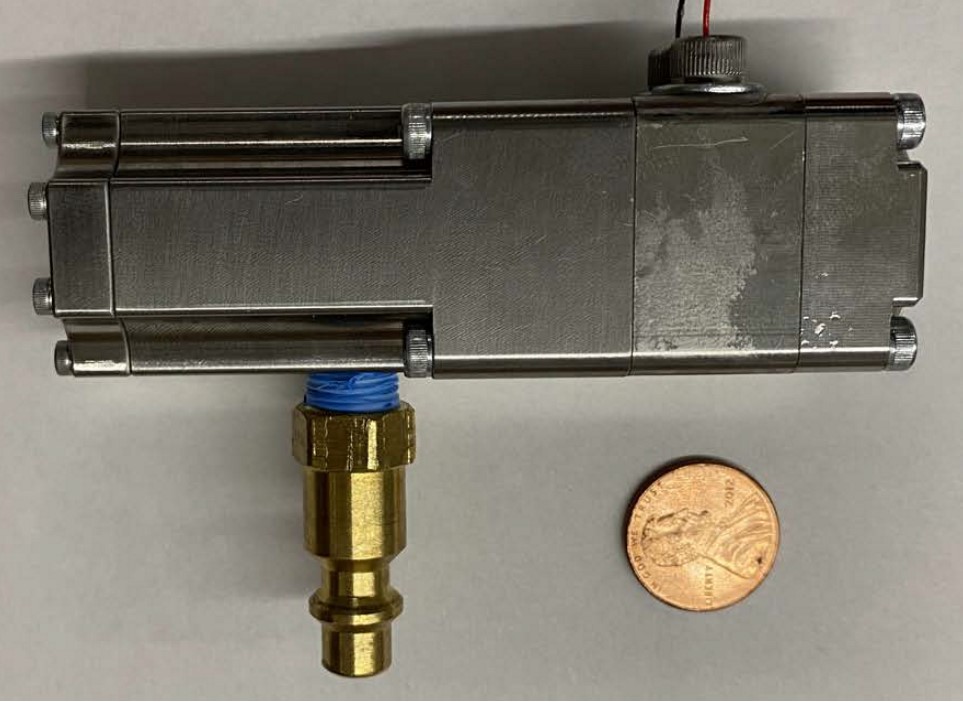High performance, highly efficient valves for controlling gas flows
A disruptive pneumatic proportional valve technology has been developed that replaces traditional solenoid actuators with piezoelectric actuators. The valves offer two order of magnitude reductions in power consumption, making them ideal for portable applications. They match the flow capacity of most miniature pneumatic valves. They offer highly linear control regardless of operating pressure. They are the fastest of any available pneumatic valves.


Applications
- Mass flow controllers
- Portable medical ventilators
- Aerospace control valves
- Soft robotics
- Remote field applications
- Service in strong magnetic fields
- Generic control valves
Technology Overview
Piezoelectric actuators require near-zero power to hold them at any static position. In contrast, conventional solenoid actuators constantly consume power to hold them at non-equilibrium positions. Piezoelectric pneumatic valves are superior for portable applications, as batteries can be downsized. However, to date, piezoelectric pneumatic valves have gained little commercial acceptance due to low flow capacity, low pressure capacity, or both. The revolutionary UMN valves achieve flow and pressure capacities comparable to common miniature pneumatic valves by combining unique seal or orifice plates with piezoelectric stack actuators. Their control characteristics are superior to solenoid valves, making them ideal for high precision applications such as mass flow controllers.
Phase of Development
TRL: 4-5Proof of concept prototype available.
Desired Partnerships
This technology is now available for:- License
- Sponsored research
- Co-development
Please contact our office to share your business’ needs and learn more.
Researchers
- Thomas Chase, PhD Professor, Mechanical Engineering Department
Licensing Terms
| MN-IP Try and Buy |
|---|
| Center for Compact and Efficient Fluid Power (CCEFP) Try and Buy – Available to CCEFP member companies |
Try
|
Buy
|
| Please contact us for detailed term sheet for a Try & Buy agreement as well as guidelines for Try1 and post-Try period2 business plans as well as qualified startups3 |